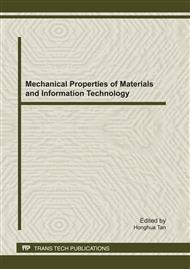p.3
p.9
p.14
p.19
p.23
p.30
p.34
p.40
A Preconditioned Gauss-Seidel Iterative Method for Linear Complementarity Problem in Intelligent Materials System
Abstract:
In this paper, the authors first set up new preconditioned Gauss-Seidel iterative method for solving the linear complementarity problem, whose preconditioned matrix is introduced. Then certain elementary operations row are performed on system matrix before applying the Gauss-Seidel iterative method. Moreover the sufficient conditions for guaranteeing the convergence of the new preconditioned Gauss-Seidel iterative method are presented. Lastly we report some computational results with the proposed method.
Info:
Periodical:
Pages:
3-8
Citation:
Online since:
September 2011
Authors:
Price:
Сopyright:
© 2012 Trans Tech Publications Ltd. All Rights Reserved
Share:
Citation:


